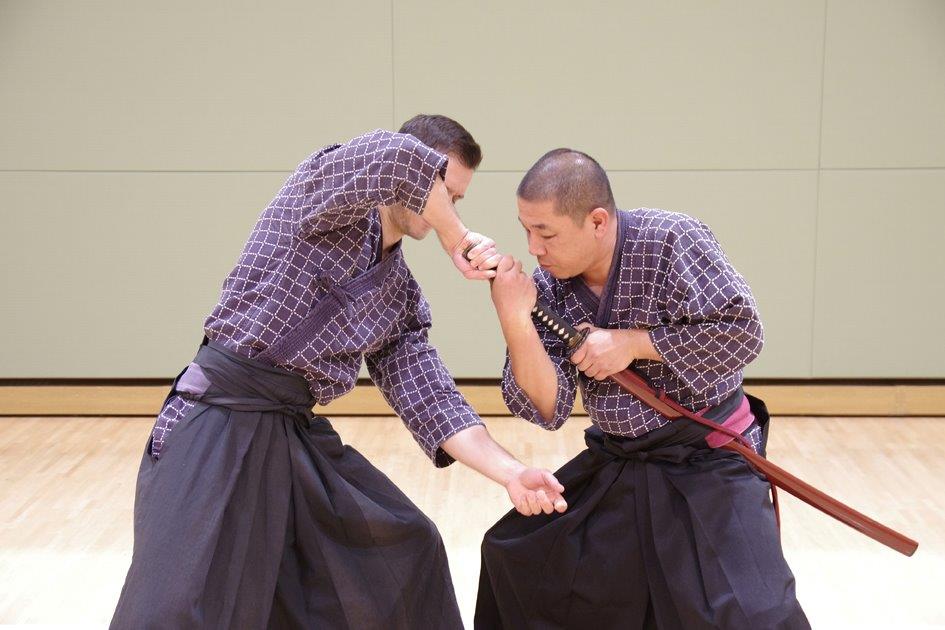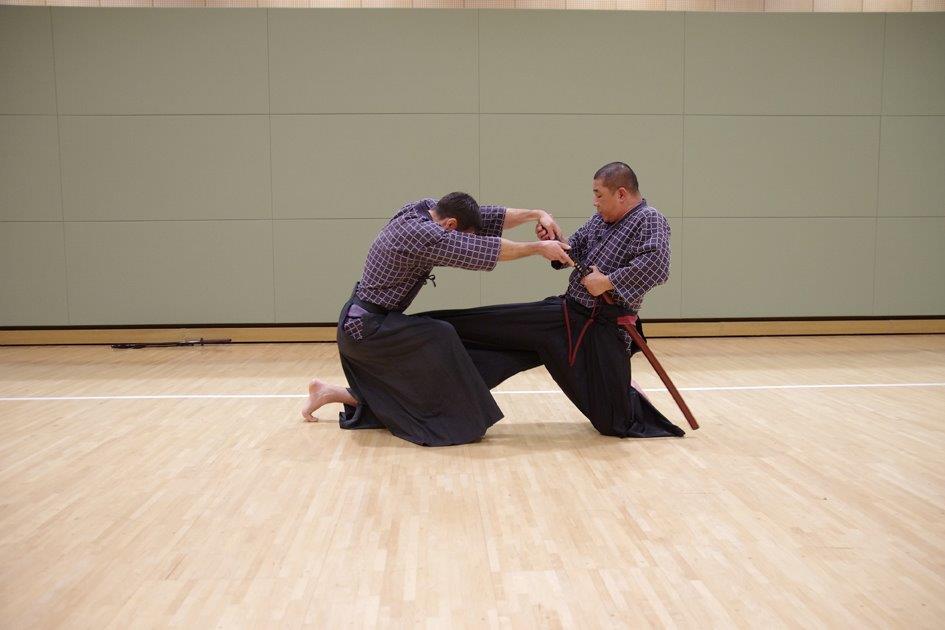1. Introduction
We receive a lot of inquiries from people asking whether it is possible to practice only iai (sword drawing techniques) at our school since they do not hold much confidence in their body strength. Therefore, we believe this issue needs to be addressed properly.
We must first ask ourselves how many people around the world practice iai. Although determining the exact figures can be difficult, let us say that a significant number of women and men at every age level are involved in the art of sword drawing. Why does iai hold such fascination among martial arts practitioners? It goes without saying that the samurai culture has a deep influence on them. Thus, iai is often seen as the connection point with ancient warriors whose lives were ruled by unbreakable levels of integrity and discipline. At least, this is how we consider the post-Meiji iaidō practice.
Let’s now consider the concepts of iai in Tennen Rishin Ryū.

2. The iai of Tennen Rishin Ryū
In Tennen Rishin Ryū, the twelve iai techniques (nine sitting and three standing) are presented at a relatively advanced stage in the Chūgokui-mokuroku level; which is the third of the four progression levels in our school. As the founder of Tennen Rishin Ryū puts it, “they are nothing but basic applications every samurai should know”.
In the Kirigami level beginners are taught techniques such as tsukakudai, kojirisabaki, and sōsha, through which they learn how to deal with an opponent trying to steal their sword away. Instead of drawing a sword and cut the enemy, more emphasis in put on taijutsu (body movements) and goshinjutsu (self-defense techniques).
In our school, standing techniques are called tachiai, while sitting ones are named iai. Compared to kenjutsu techniques that are used after a sword has been drawn from its scabbard, the iai teaches how to counter an enemy attack quickly, thus solving situations that appeared to be compromised from the beginning of an encounter. Another difference with kenjutsu is that via iai practitioners are supposed to face multiple opponents simultaneously. However, such situations will result in death if we only focus on the beauty of the technique. Cutting down several enemies with perfect strikes is something that works only in the movies and has nothing to do with the reality of combat. Unless there is a huge gap in physical strength between us and our enemies, defeating all of them with iai techniques is unlikely. Any serious martial artist will understand that immediately. This is why in Tennen Rishin Ryū’s paramount importance is given to kenjutsu and its full-contact sparring, gekiken, with use of bōgu (body armor as the one used in Kendō). Through this strenuous training system practitioners will inevitably increase their physical strength and lung capacity; also, they will learn how to handle stress in dynamic situations.
With that said, it is important that new students willing to enroll in Tennen Rishin Ryū fully understand that iai won’t be the first practice they will undertake.

3. Tachiai concepts (three techniques)
In this section the learning of nukiuchi (drawing the sword and cutting the opponent) will mainly be discussed. So, when is this applicable?
- On the street when an opponent passing by attacks.
In such situations, our goal is to draw our sword and strike the opponent before their sword reaches us. After defending the first attack with iai, we will shift to kenjutsu techniques.
- We attack the opponent first.
In this case we must make sure to defeat an opponent with our first strike. If the opponent can parry or counter our attack, then we will be forced to utilize kenjutsu again. That is why in the Chūgokui-mokuroku level students learn different applications of bokutō and shinai techniques mastered in the Kirigami and Mokuroku levels.
- Natural waking style
- Loosen the sword from the sheath with a small motion
- Correct cutting angles
As opposed to kenjutsu, where we face an opponent coming at us with a sword already drawn, in iai we must learn how to respond to unexpected attacks in a split second. How difficult is this? Although an opponent’s skills have to be taken into consideration, constant practice is required for mastery.
4. Iai concepts (nine techniques)
There are nine sitting techniques in Tennen Rishin Ryū. Through them we learn how to deal with opponents attacking us from all directions. Drawing the sword on our right and/or left side requires different training methods and a greater perception of our body and distance. In addition, a practitioner will also learn how to incorporate striking techniques (punches and kicks) during iai’s application. Striking the opponent with a kick prior to drawing the sword is one characteristic of our school. A teacher also needs to stress the importance of applying jūjutsu correctly. A real opponent will never let the hilt of a sword go merely because we fake a maegeri (front kick). Real practice is the only way to master this section.

5. The illusion of iai
There are hundreds of schools where iai is an essential part of the curriculum. Many of them include katatewaza (single hand techniques). In Tennen Rishin Ryū they are used only as ōjiwaza (counter attack) or fuiuchi (surprise attack), and never as a consecutive strike. Just imagine how hard it is to break an opponent’s strong defense with a single hand. If you have the experience of free sparring this is easy to understand. A general rule of thumb is to avoid parrying or countering an opponent’s attack single-handedly.
This is why iai in our school is generally taught as an extreme solution in situations that are unavoidable. To understand how an opponent will move and react is also crucial; otherwise, the entire practice of iai will result in merely dancing with little to no efficiency in a real situation.
To conclude, the iai of Tennen Rishin Ryū is not intended as a polished art where human development is the goal. A practitioner looking for that would be best suited in understanding the traditions developed during the Meiji period and beyond. We are not saying that such development is impossible within Tennen Rishin Ryū, but it will not happen just by learning the iai section because our school is a comprehensive system of martial arts.
